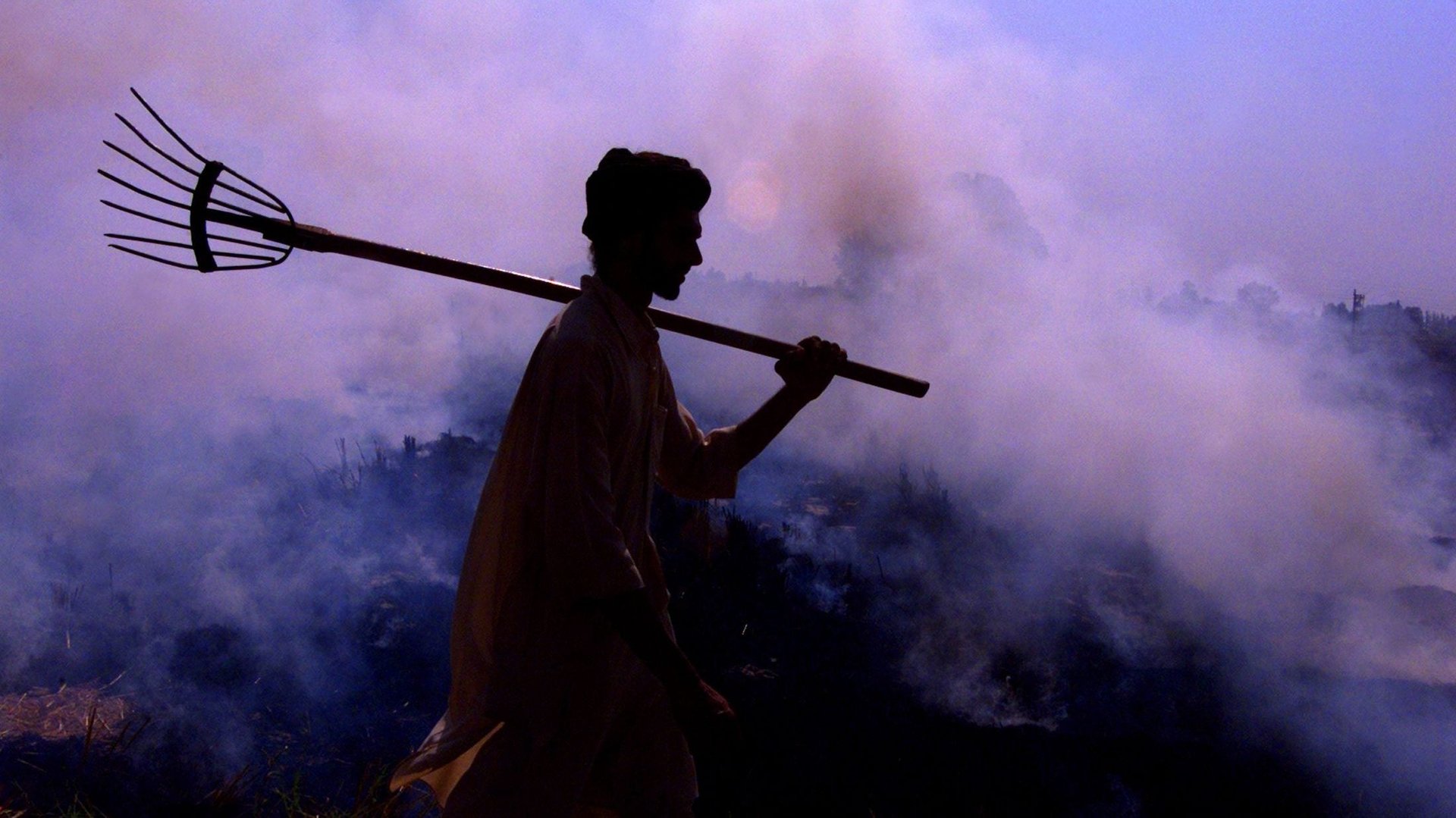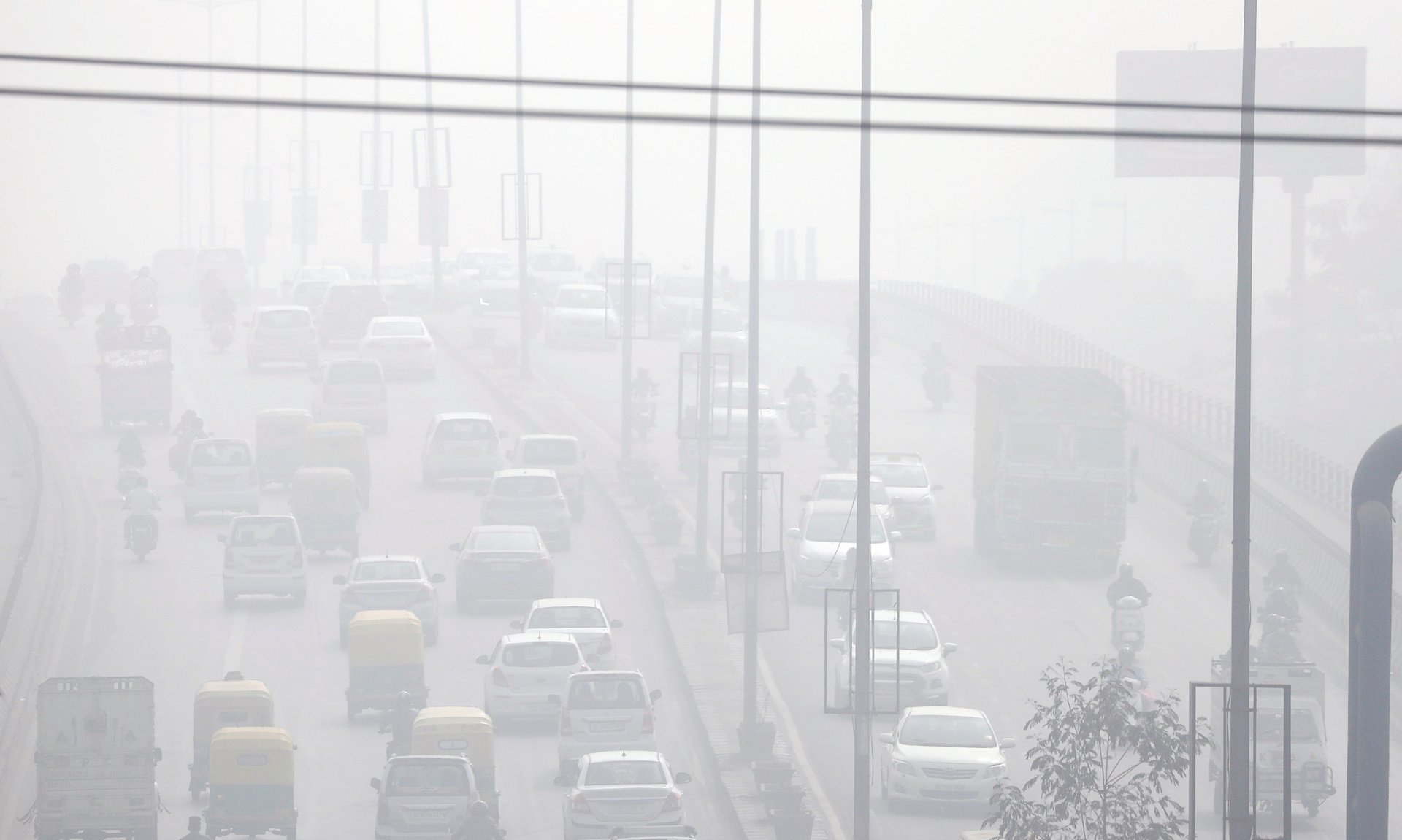Farm fires in north India are at their lowest in eight years, but Delhi’s still choking
It’s that time of the year again when crop residual burning in the northern Indian states of Haryana and Punjab starts making Delhi’s air quality toxic. But this year, things are looking a tad better—at least so far.


It’s that time of the year again when crop residual burning in the northern Indian states of Haryana and Punjab starts making Delhi’s air quality toxic. But this year, things are looking a tad better—at least so far.
Crop residue burning in northern Indian farmlands during this time of the year is at its lowest level in eight years, according to images from NASA satellites that map land fires.
Agriculture in the region has two growing seasons: from May to September and from November to April. After harvesting the September crop—often manually with a sickle—farmers in the capital city’s neighbouring states of Haryana and Punjab traditionally burn the residue stalks to clear the field for the next sowing season in November.

The fires emit particulate matter of less than 2.5 millimetres in diametre. Abbreviated as PM 2.5, these small particles can enter deep into the human respiratory tract, reaching the lungs. Winds from Punjab to Haryana and even parts of Pakistan bring PM 2.5 to the northern Indian plains, particularly Delhi, around the beginning of winter. The dust particles mix with the seasonal fog to create smog that envelops the Indian capital around this time every year.
Besides residual crop burning, the high concentration of PM 2.5 in Delhi’s air has many causes, including vehicular pollution, brick kilns, construction work, and burning of firecrackers during the Hindu festival of Diwali, which falls on Oct. 27 this year. While the city government can tackle most other sources, stubble burning is beyond its jurisdiction.
This has made the issue into a political nightmare, with rival parties blaming each other for inaction. But over the years, the policy efforts such as subsidies to farmers to buy modern harvesting equipment which does not leave behind crop residue may have borne fruit.
Too soon to not go wrong
This is, however, only the beginning of the crop burning period. The highest incidence of crop burning generally takes place in early November, coinciding with Diwali and intensifying the smog crisis in the week immediately after the festival.
The late start of the monsoon season earlier this year may be one of the reasons behind the lower incidence of crop burning so far. With rains starting late, some farmers delayed the planting of seeds, which would then delay the harvest and stubble-burning.
In any case, crop burning itself has not been eradicated, as the NASA images show.
The Indian ministry of earth science estimates that crop burning’s share in Delhi’s PM 2.5 pollution levels will quadruple today (Oct. 14) to 8%.
The city is already gasping for breath. Since the end of last week, the concentration of PM 2.5 across Delhi, measured by dozens of government-installed meters in various neighbourhoods, has crossed 200μg/m3—20 times over the safety limits prescribed by the World Health Organization.